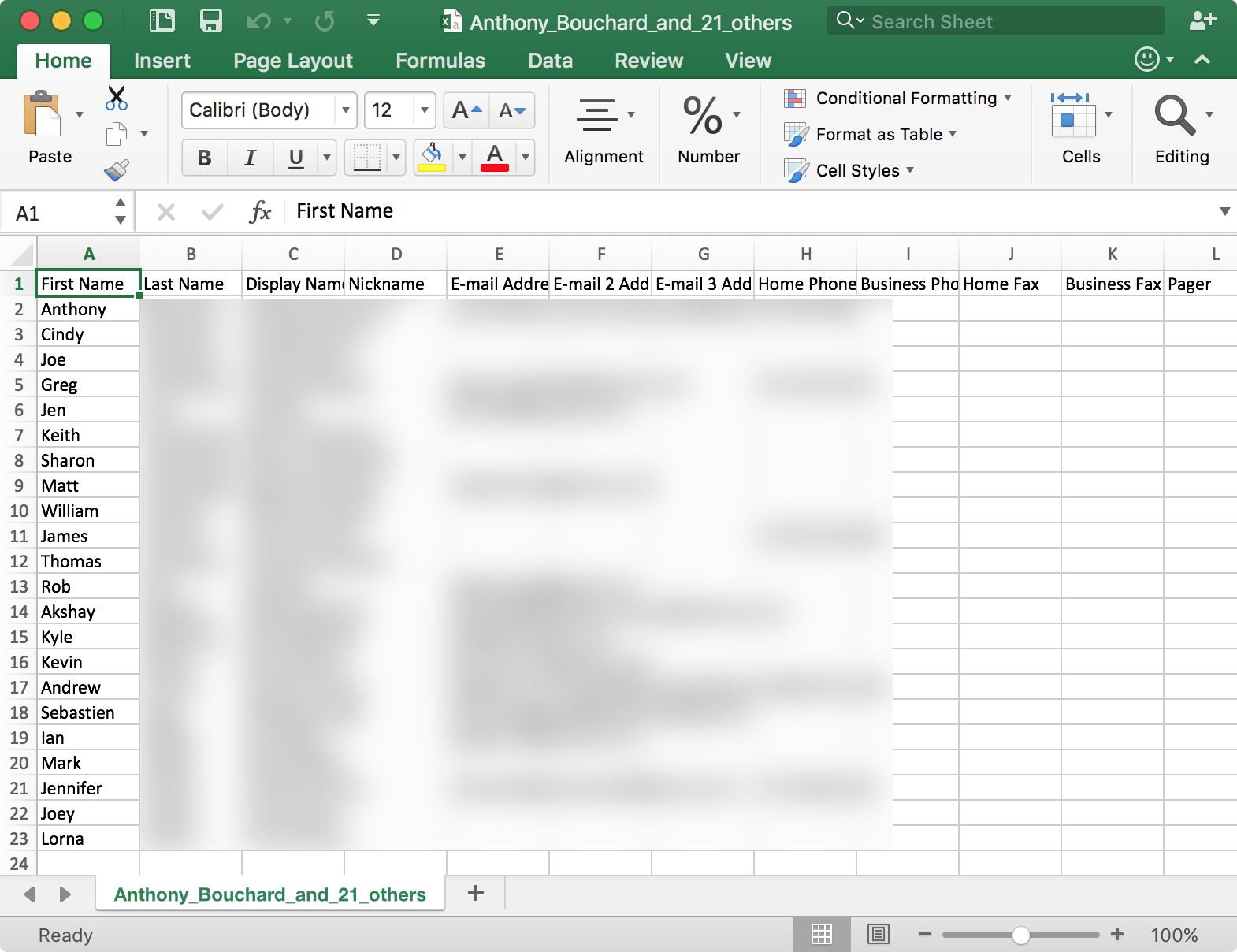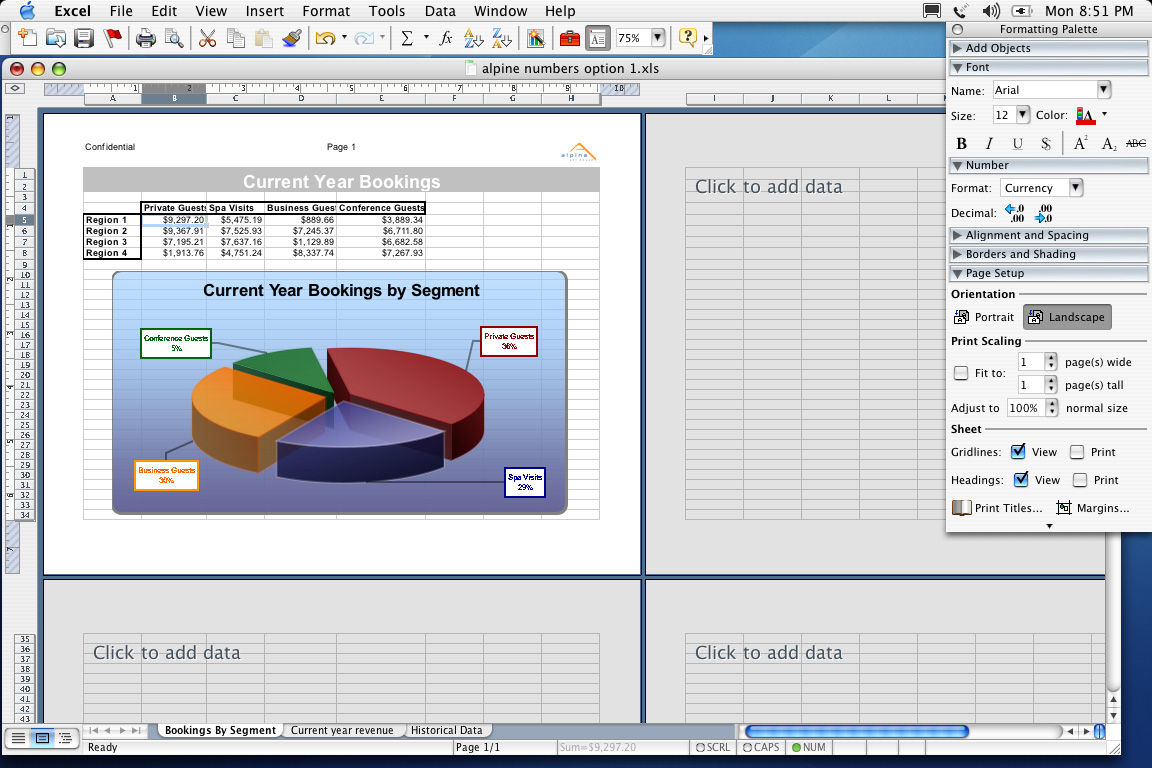Using Microsoft Excel On A Mac
- Microsoft Excel Download For Mac
- Using Microsoft Excel On A Mac Computer
- Microsoft Word And Excel For Mac
How to import Microsoft Excel spreadsheets into Apple Numbers. Launch Numbers (it’s in the Applications folder of your Mac). In the window that automatically opens when you launch the app, navigate to the location of your Excel file. For example, if it’s in Documents. Launch Excel from your Mac or PC computer. On your Mac, you can also find the program by opening the Finder app, then selecting 'Applications' from the left menu, and clicking 'Microsoft Excel.'
Aug 20, 2015 Working with external data in Excel 2016 for Mac By the Excel team These days we all live and work in a multi-device, multi-platform world, and so when building Office 2016 for Mac, one of our key objectives was to make it as easy as possible to transition from using Office for Windows to using Office for Mac and back again. It depends on your level of proficiency with Excel, but Excel for Mac is just fine. I was a power user on PC and now am a power user on Mac. It took me just a few weeks to internalize it all. For basic operations like simple formulas, sorting.
These days we all live and work in a multi-device, multi-platform world, and so when building Office 2016 for Mac, one of our key objectives was to make it as easy as possible to transition from using Office for Windows to using Office for Mac and back again. That’s why you’ll notice an interface that’s consistent with what you’d expect when using Office 2016 for Windows, and why we added support for virtually all of the Windows Excel Ctrl keyboard shortcuts. So when it came to working with external data, we applied that same logic: how can we make the experience great and working cross platform easier than ever? Google apps microsoft outlook mac.
External data in Excel 2016 for Mac
We examined how we could improve external data for Excel 2016 for Mac and made the following changes:
- Excel 2016 for Mac comes with a pre-installed and integrated SQL Server ODBC driver, which we worked hand-in-hand with Simba Technologies to provide.
- Excel 2016 for Mac has a brand new Microsoft Query (MSQuery) and Connection Manager to make creating and managing all of your data connections easier and more consistent with Windows.
Let’s take a deep dive into how each of these improvements can help you.
Native support for ODBC data connections
Excel 2016 for Mac supports ODBC data connections with SQL Server and Azure SQL Database right out of the box. This means several great things for anyone who works with external data:
- When creating or refreshing data connections to SQL Server, there are no third-party drivers required—everything you need is included right in the app.
- Connections made to SQL Server in Excel 2016 for Mac will work in Excel for Windows and vice versa. Have a workbook with ODBC data connections you’ve been using on Windows and never been able to use on your Mac? Well, now you can with cross-platform compatibility.
- If you want to connect to something other than SQL Server, we still have several great partners offering third-party drivers to connect to any data source you can imagine.
In addition, all of the ways in which you interact with external data are now consistent between the platforms. Looking for that Refresh button? It’s on the Data tab just as you’d expect.
The Data tab in Excel 2016 for Mac.
A better way to work with external data connections
One of the biggest improvements to working with external data connections in Excel for Windows in recent releases has been the Connection Manager. It provides a central place to see all of the data connections in a workbook, see where they are used, and modify, remove or refresh each one individually. With Excel 2016 for Mac, you now have that same Connection Manager you are familiar with from Windows. All of your connections are displayed, and you can click any of them to see where they are used in your workbook and to perform any action.
The all-new Connection Manager in Excel 2016 for Mac.
The Connection Properties dialog has been streamlined as well to match Excel for Windows, so that you now only see the properties that apply to your particular data connection.
All of your connection properties are in one place and just like Excel for Windows.
However, what good is easier management of your data connections if it’s too hard to create them to begin with? With Excel 2016 for Mac, creating a connection to SQL Server is easier than ever. On the Data tab, simply select New Database Query > SQL Server ODBC, and you are presented with a simple connection dialog. Once it’s filled out, the newly redesigned MSQuery launches.
The all-new MSQuery in Excel 2016 for Mac.
The new MSQuery experience is very similar to the SQL Query Analyzer that many of you have worked with. On the left is a listing of the databases and tables in your database that you can explore. At the top right is a color-coded SQL editor, and at the bottom right are the results of any query you run. Simply enter a SQL statement, click Run Query to make sure it works. Once it does, click Return Data to drop your data right back into your worksheet. And that’s it; your data is now in your Excel workbook, live and ready to use in Excel 2016 for Mac or Excel for Windows!
Working with a third-party data provider works the exact same way. The only difference is that after installing the data provider, you select New Database Query > From Database and then select your data provider from the Apple iODBC manager.
Now it’s your turn!
We think we’ve made huge strides in making external data easier than ever in Excel 2016 for Mac and we hope you do too. Give it a try and let us know of any questions or feedback you have in the comments!
Latest Version:
Microsoft Excel 16.33 LATEST
Requirements:
macOS 10.13 High Sierra or later
Author / Product:
Microsoft Corporation / Microsoft Excel for Mac
Old Versions:
Filename:
Microsoft office for mac 2016 free download. Microsoft_Office_16.33.20011301_Installer.pkg
Details:
Microsoft Excel for Mac 2020 full offline installer setup for Mac
 modern collaborative working environment.
modern collaborative working environment.It is very hard to quickly review software so powerful, versatile, ubiquitous, and genre-defining as
 MS Excel for Mac. Regarded as the gold standard for spreadsheet creation and analysis, MS Excel to this day outmatches all competition with its wide array of tools and powerful advanced features that satisfy the needs of everyone, from first-time spreadsheet users to largest corporations who are interested in analytics and integrated forecasting functions. Its versatility enables effortless integration into workflows for managing countless tasks, including but not limited to, document creation, budgeting, personal finance, tax record management, small business document management, student/research analysis, and extensive needs of government agencies, non-profit organizations and largest corporations on the planet.
MS Excel for Mac. Regarded as the gold standard for spreadsheet creation and analysis, MS Excel to this day outmatches all competition with its wide array of tools and powerful advanced features that satisfy the needs of everyone, from first-time spreadsheet users to largest corporations who are interested in analytics and integrated forecasting functions. Its versatility enables effortless integration into workflows for managing countless tasks, including but not limited to, document creation, budgeting, personal finance, tax record management, small business document management, student/research analysis, and extensive needs of government agencies, non-profit organizations and largest corporations on the planet.Microsoft Excel Download For Mac
Even though it is filled to the brim with tools and services, the user interface of the MSExcel is as intuitive as ever, providing easy access to every one of its functions via tabbed toolbars on the top of the window, right-click cell menus and powerful configuration tools in the main setting window. Longtime users will have no trouble adapting to the latest version of the app, only really needing to get accustomed to the newly introduced integration into the Office 365 online suite that enables effortless online collaboration and document sharing.
Using Microsoft Excel On A Mac Computer
Features and Highlights
- Effortless Spreadsheet creation – Manage spreadsheets of all sizes, from personal or school documents to government databases.
- Extensive toolset – Take advantage from most advanced toolset present in modern spreadsheet software, including advanced formulas, pivot tables, lookup formulas, charts, sorting & filtering data, conditional formatting, structural references, data explorer, data analysis, VBA, macros, automation and much more.
- Analytics – Gain valuable insights from built-in analytics tools.
- Audit Trail – Track changes in audit files using the integrated Review and Track Changes tools.
- Advanced calculations – Take financial and data analysis to a whole new level.
- Charting – Visualize data with a wide array of charts that can be exported to other apps from Office suite.
- Multi-user collaboration – Office 365 integration enables all users of Excel to easily share their documents and collaborate.
- Templates – Simplify document creation with powerful and customizable template offering.
Microsoft Word And Excel For Mac
Note: 5 days trial version.
Also Available: Download Microsoft Excel for Windows